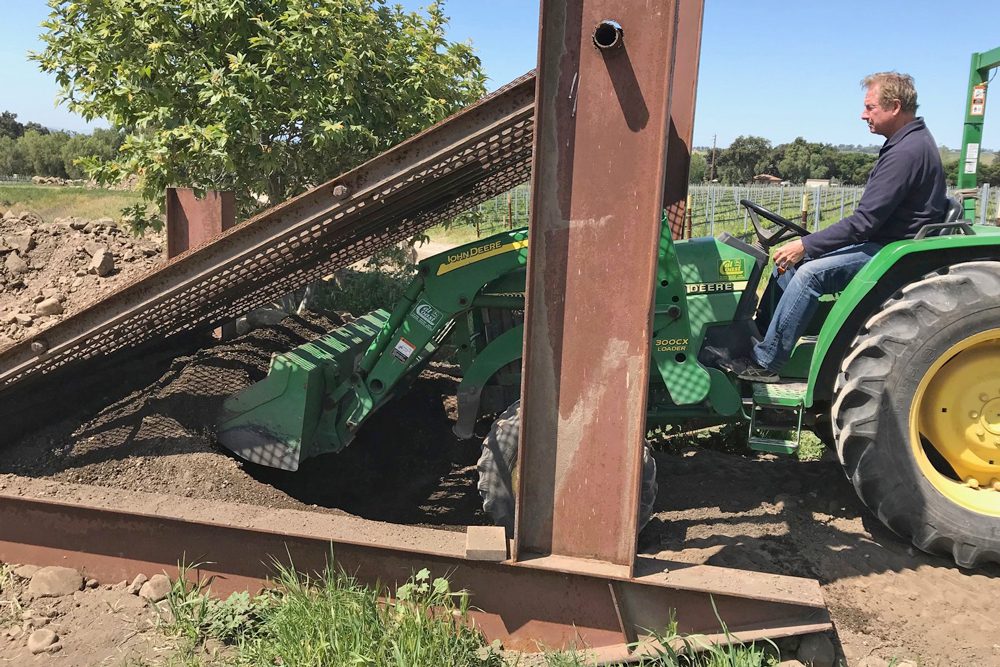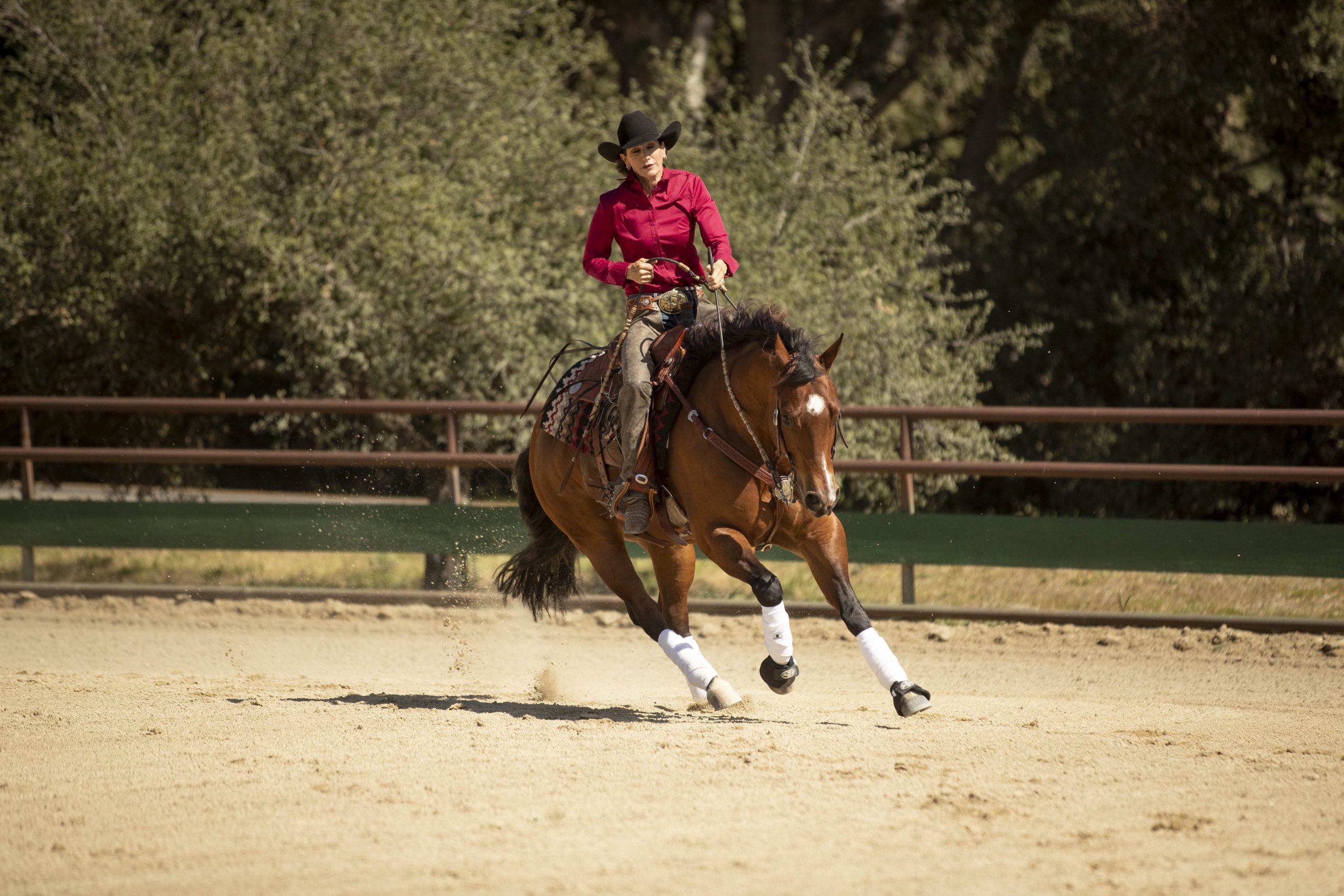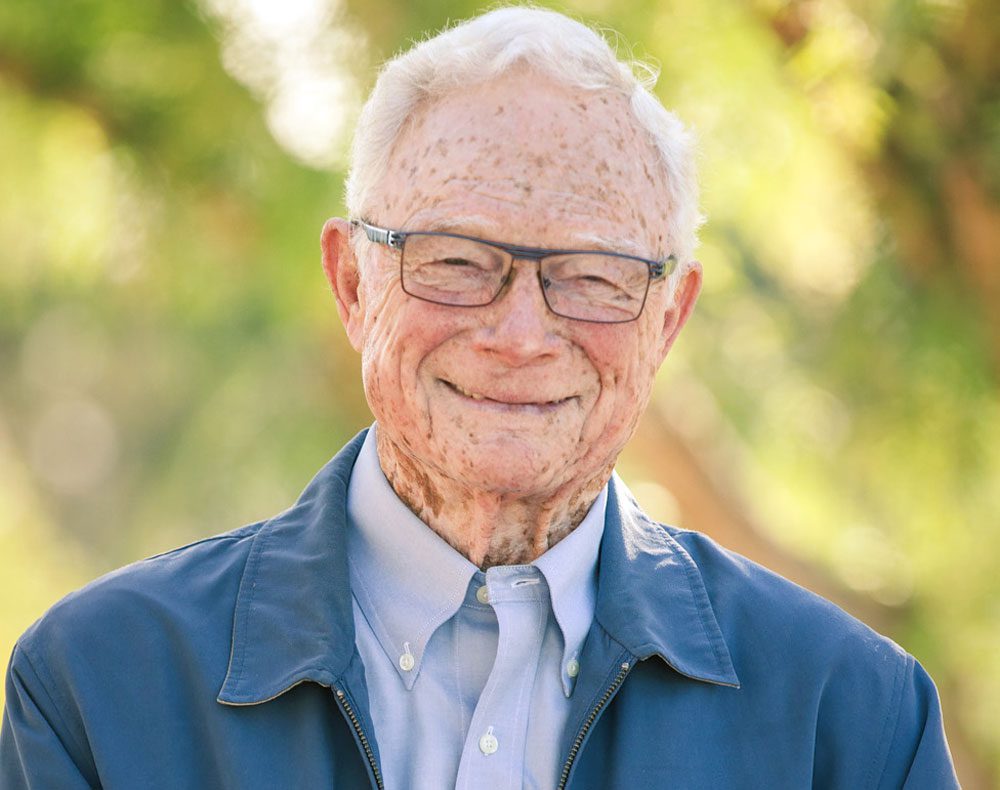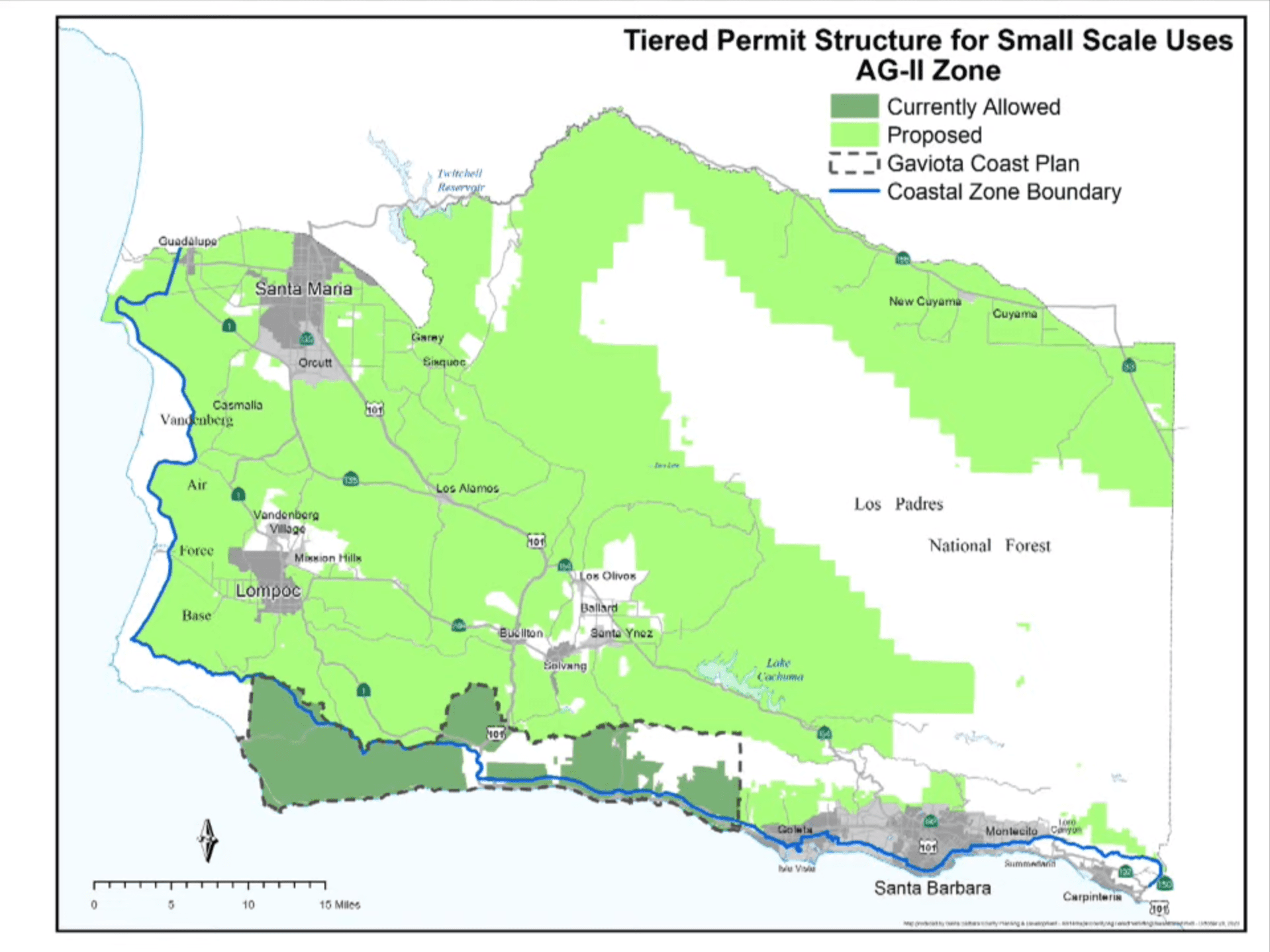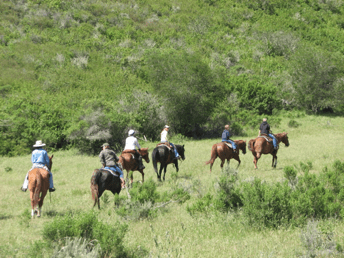By April Charlton
Contributing Writer
Massive mounds of boulders and rocks that roared down Oak Creek and filled a culvert near Fred Brander’s Montecito home during the deadly Jan. 9 mudslides now sit in piles at his Santa Ynez winery.
“We didn’t really have any damage to the house but had so much debris,” Brander said as he pointed to the numerous piles of rubble at his 42-acre vineyard on north Refugio Road. “We had about 60 truck loads (brought here), which is about 900 tons of rock.”
The smaller rocks are being separated from the dried mud using a low-tech rock sorter on his property, and the soil will be used to fertilize a 10-acre section of the vineyard. The larger boulders will be used for landscaping and also become part of a rock wall on the property that’s also home to Brander Winery.
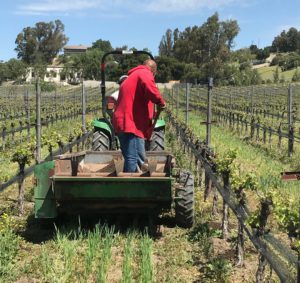
Laurie Jervis / Noozhawk photo
A Brander Vineyard employee shovels soil from the Montecito debris flow onto cabernet sauvignon grape vines
Brander said because his home is so high up on the hill — it was only 100 yards away from the Thomas Fire fire line — there are no toxic contaminants in the soil, as could be case closer to the ocean. The soil has been tested, Brander said, and it came back negative for contaminants.
“I have never heard of anyone using mud from a mudslide or ash from a fire to fertilize (their grapes),” Brander said. “This is a very novel, unique idea.”
His thoughts were to use the mineral-rich soil from the mudslides, which the county needed to haul out of the area, to grow a richer grape that will produce a stellar varietal, while also helping the county move tons of debris to an alternative sight.
“My parents’ and grandparents’ generation would grow vegetables in their garden and they would use ash from their stove to fertilize their vegetables, and those were far more nutritious than what you get today,” Brander said. “It has nothing to do with organic. It has to do with ash has a lot of potassium, a lot minerals … just because it’s organic doesn’t mean it has those minerals.”
Brander contacted the trucking companies that had contracted with the county to remove the mud and boulders from Montecito to see where the material was heading and learned a good portion of it was to be brought to Los Olivos.
“Essentially, it was all county money,” Brander explained about have some of the debris delivered to his winery instead. “I said, ‘You could take it to Los Olivos or here; it’s a shorter trip. They basically did it for free.’”
Brander believes the sorting process will take the next few months and said it’s likely not all of the soil undergoing separation will be applied to the vineyard, at least not this season.
In all likelihood there will probably be so much soil when the process is complete that there will be material left over, he said
“We’ll just use it in stages,” Brander said. “If we don’t finish it this year, we’ll finish it next year. We’ll have to wait until September or October of this year to see this result, but we should, obviously, influence the growing season this year. The idea is to have really good grapes from use of that soil.”
Brander plans to make a Cabernet Sauvignon from the grapes grown on the soil. The varietal won’t be available until about October 2019.
“It will be a small batch,” he added. “Maybe a couple hundred cases.”
The longtime Santa Ynez winemaker would also like to see a special label created for the wine and possibly hold a community contest to choose a name for the varietal that will be produced only the one time.
“Sort of a name that expresses the whole idea of taking the mud from the mud slide and converting it to a good use,” he said.
Brander plans to donate the proceeds from the wine to Montecito mudslide relief efforts.
For more information, visit www.brander.com.

